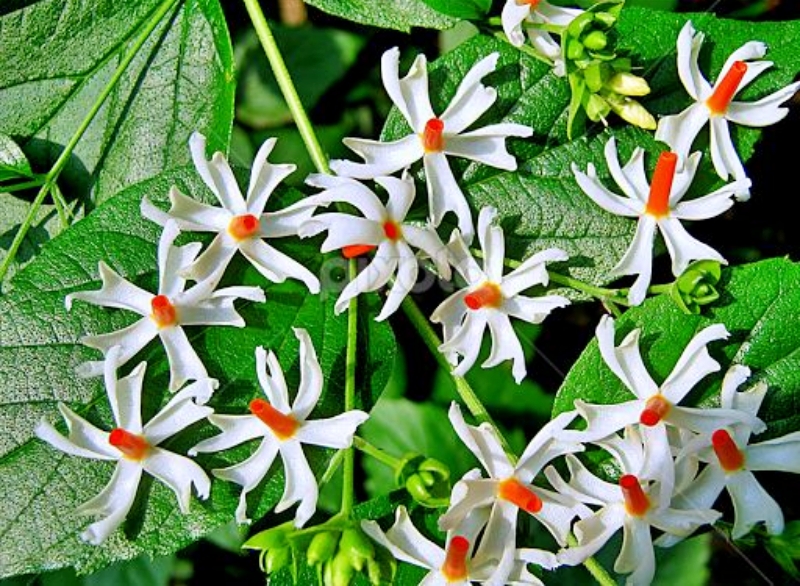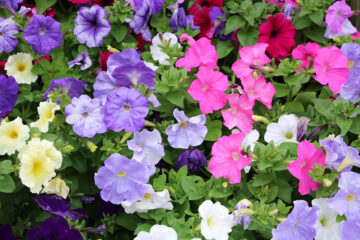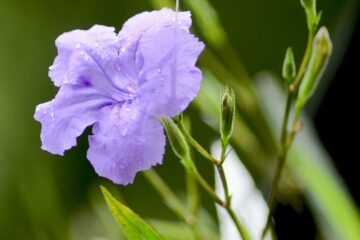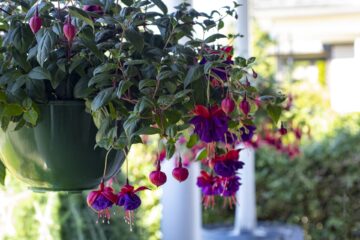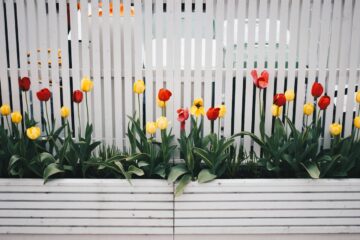The Parijat flower, which is known as Night-flowering Jasmine or Coral Jasmine in English, is also known as a flower that blooms at night. Nyctanthes Arbor-Tristis, the Night-Flowering Jasmine or Coral Jasmine, is a Nyctanthes species that is native to South and Southeast Asia. Parijat belongs to the Oleaceae family. They are also found in Thailand, Indonesia, Nepal, and Pakistan. The tree is known as the ‘tree of sorrow’ because its flowers become less vibrant during the day. The term arbor-tristis also means “sad tree.” Parijat is also known as Harsingar or The Gods’ Ornament in India. Thus, it is the sole flower that can be taken from the ground and presented to the gods. It is mentioned that the flower aids in recalling memories of past lives and incarnations.
The flowers of Parijat, which are enchanting and enigmatic, fall to the ground after they bloom. At night, the flowers open and fall from the branches as soon as the sun rises. The fragrance of these beautiful blossoms is filled with a sweet floral scent. The parijat plant thrives in sunny balconies and outdoor gardens.
Overview
- The parijat shrub is a decorative plant that can reach heights of up to 13 feet.
- The night-blooming jasmine, as it’s called, produces a diminutive, fragrant, tubular flower that opens at night and has five to eight lobes with an orange-red center.
- Night-blooming jasmine produces flowers frequently throughout the summer and spring.
- The nighttime blooming of these incredibly fragrant flowers results in their release of an extraordinarily sweet floral scent that fills the air.
- August to December are the blooming seasons for these flowers.
How to grow Parijatham plant?
- Growing Parijat from a cutting taken from a healthy plant in the spring or early summer is a simple process.
- Cut a 6 to 8-inch long cutting from a plant that is healthy just below the node.
- At the top, leave a few leaves and remove all the leaves from the lower area.
- It is recommended to plant it in a pot that has potting soil that drains well.
- After watering it well, wrap it in a plastic bag.
- Place the pot in a location with sunlight that is bright and filtered.
- If the soil feels dry, it’s important to moisten it frequently.
- The cutting will develop new roots within 3–4 weeks after planting.
- The plant prefers outdoor semi-shady conditions and alternate-day irrigation.
How to grow Parijat from seed?
- Collect fresh seeds from the Parijat plant.
- The seeds should be soaked in warm water for 24 hours to soften the outer shell.
- Fill small pots or trays with soil that is well-draining.
- Place the seeds above the soil and lightly cover them with soil.
- Keep the soil moist by gently watering it.
- Put the tray or pots in an area that is warm and bright, but not in direct sunlight.
- Maintain a consistent level of moisture in the soil by avoiding over-watering.
- After the seeds sprout, divide them and transfer them to larger pots or the ground.
- Give the plant enough sunlight, water, and nutrients to promote healthy growth.
How to grow Parijat from cuttings?
- Get a healthy cut from a Parijat plant, particularly if it’s a young stem with softwood.
- Remove the lower portion of the cutting’s leaves and soak the end in rooting hormone or water.
- Plant the cutting in well-drained soil and keep it moist.
- Cover the pot with a plastic bag or a glass jar to create a humid environment and maintain moisture.
- Situate the pot in a place that is both bright and warm, but not too close to direct sunlight.
- Roots will form and the plant will begin to grow after a few weeks.
- Once the roots have grown, remove the covering and ensure the plant receives adequate sunlight, water, and nutrients to promote healthy growth.
How to maintain Parijatham?
- Parijat requires 1-2 weeks of initial care after you have received it.
Soil
- Use healthy, moist, permeable soil that drains well.
- Adding organic material, like aged cow dung manure, compost, or vermiculture, is a great way to add it to it.
- You have the option to use any potting soil that is offered for potted plants in containers.
- In addition, you can create a soil mix by combining equal parts of coarse sand, garden soil, and cow dung manure.
Sunlight
- The plant adores the sun.
- After it has matured, place it in a location that receives 5 to 6 hours of direct sunlight.
- Avoid growing it in a shaded area as it will cause restricted growth and less or no flowers.
Watering
- Keep the soil moist but not soggy. Water the soil only when you notice the topsoil is no longer moist.
- Test the soil’s moisture content by poking it with your finger or a small stick.
- Add 4 cups (about 200 ml) of water when the soil in the pot feels dry to the touch.
- Water, ideally in the morning or late at night. Don’t overwater the plant.
- In general, it’s best to water the plant extensively during the summer and sparingly during the winter and rainy season.
Fertiliser
- Before applying fertilizer, loosen the topsoil without disturbing the plant’s roots to help it absorb nutrients and moisture.
- Feed the plant with organic fertilizer once a month during the primary growing season.
- Immediately water after applying fertilizer.
Don’ts
- Avoid over-watering the plant, especially if the pot doesn’t have drainage holes.
- Avoid soaking flowers and leaves as it could lead to fungal infections.
- Standing water is the biggest threat to this plant since it causes the roots to rot and die.
- The plants will benefit from annual fertilization.
- Due to the uneven growth of the shoots, the plant needs to be pruned.
- The plant flourishes best in the shaded and direct sunlight section of the garden.
Parijat Medicinal Uses
- In Ayurvedic and homoeopathic treatment, the leaves have been used to alleviate sciatica, arthritis, fever, and laxative effects.
- Controlling excess blood sugar levels is a key health benefit of parijat.
- According to studies, parijat leaves have a particularly effective effect on treating malaria symptoms.
- Sedative, antioxidant, anti-inflammatory, and diuretic properties are present in the flowers.
- Antifungal, antibacterial, antipyretic, anti-oxidative, and anti-inflammatory properties are present in the leaves.
- Treats a dry cough, Controls anxiety and dental problems.
- Due to the presence of ethanol in them, parijat flowers and leaves function as immunostimulants to strengthen immunity.
- The seeds of the parijat tree are used to treat skin conditions and constipation.
- Parijat flowers are utilized as a hair tonic to strengthen and prevent hair loss.
- Parijat deals with digestive problems like hyperacidity, nausea, and other issues.
- Helps relieve the pain of menstrual cramps.
- Parijat aids in eliminating worm infestation.
- The easiest way to use Parijat’s leaves and blossoms is by making a tea or decoction.
- The plant’s oil is utilized for its healing properties.
- Medically, parijat tincture is also used as an alcoholic extract.
- The use of a parijat seed decoction helps to eliminate and manage dandruff and head lice.
- Parijat also helps prevent other scalp-related conditions, such as hair thinning and greying.
- Stomach ailments of children can be effectively treated by combining the juice of the leaves with a little sugar.
- Different face packs are made using parijat, as it gives the face a garish shine and is guaranteed to cure several skin conditions.
- The plant can also be used as dye. The flowers can be used to make yellow clothing dye.
- Flower oil is also widely used as a fragrance ingredient.
- The flower is used to make incense sticks because of its strong fragrance.
Toxicity of Parijat
This plant, which is both sturdy and fragrant, attracts butterflies and birds, but it is toxic to mammals, such as dogs and humans. Prevent your dog from sniffing and eating the plants excessively. Nausea, vertigo, and throat and nose irritation may be mildly harmful side effects that some mammals may encounter when inhaling the plant’s scent.
